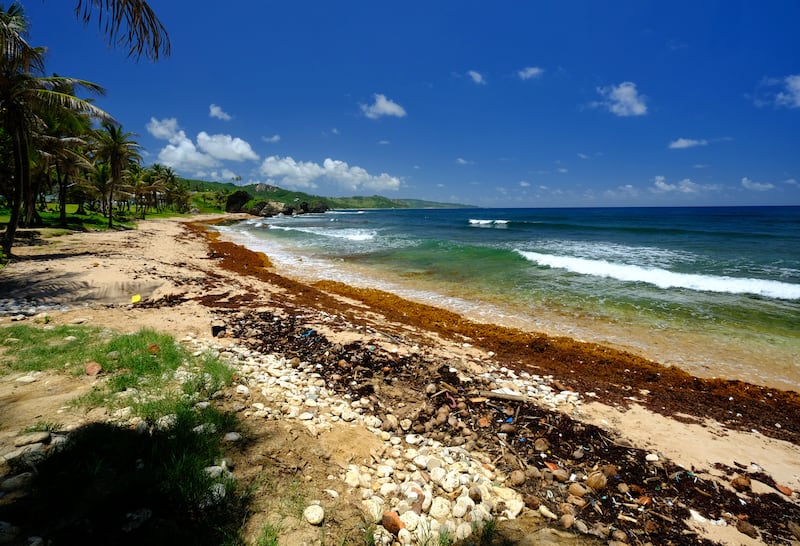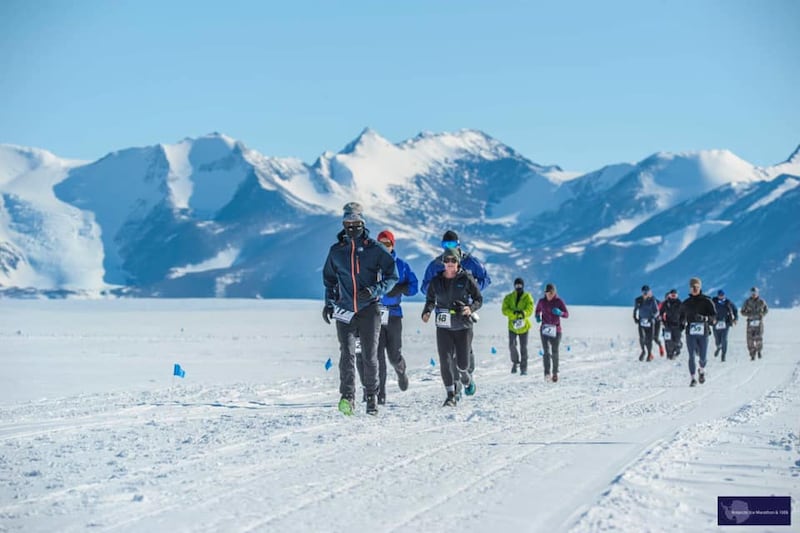We were somewhere around the turning point near Bathsheba beach when nature whipped off my T-shirt and instinct carried it the rest of the way. Better than it being plastered to my back. Now show me the finish. There are lots of perfectly good excuses not to set yourself any running targets for the month of December, only this had gently defied them all. A perfectly good reason to get away.
Sometime in 1983, Austin Sealy and his colleague Carl Bayley from the local Barbados banking business dreamed up the idea of staging a marathon down here. Sealy was also president of the Barbados athletics federation, later head of its Olympic committee, and understood well the value of putting on a running event in December which also came with the guarantee of blue skies and blissful sunshine and that soft Caribbean breeze.
No surprise it soon caught on, aided by invitations to some of the world’s best distance runners. The early winners included Britain’s Hugh Jones, who won six in all, tying for victory his first year in 1990 with Canada’s Peter Maher, now resident in Cork. Jones still holds the Barbados marathon record with his 2:22.33 from 1991, the American Kim Goff and our own Carey May among the early women’s winners.
That first Run Barbados series included a 10km race and that soon went properly global; in 1985, a year after winning the silver medal in the LA Olympic marathon, John Treacy won the 10km race here in 29:11. That stood as the course record until 2002, when Kenyan Joseph Kariuki improved it to 28:40.
READ MORE
In those days the races were staged around Bridgetown and up along the west coast as far as Sandy Lane. After a two-year hiatus thanks to the pandemic, the local organisers dreamed things up a little again and this year moved the entire event to the magnificently rural and unspoilt east coast. On an island nearly 34km long and 22.5km wide, populated by 285,000 people, every distance is not far.
Over two days last weekend, from early Saturday evening and even earlier Sunday morning, there were eight events in all – six races and two walks, including a 5km, 7km, 10km, half-marathon and marathon. Everyone gets the same finishers’ T-shirt and mingles among the food tents and the reggae rhythms at the Barclays Park picnic spot, without needing to ask or tell which distance they in fact finished.

They came in all shapes and ages too, about 600 in total, running into the sunset or else the sunrise. As with every other big city or small town marathons around the world, the once great distance, made sacred by Philippides and Spiridon Louis and made famous by Emil Zatopek and Abebe Bikila, has been stripped or else broken down in order to make the running of it appeal to everyone, a perfect reminder of which comes with the run – and the staying for the fun – of Barbados.
My invitation came courtesy of Barbados Tourism Marketing Inc, and with the possible exception of the Hawaii marathon and its uniquely aloha spirit, the small island spirit here came closest to a sort of running paradise too. At Bathsheba beach, just down from the finish and the swell coming straight off the Atlantic, there was some proper Hawaiian surf on offer too; Kelly Slater by pure chance out there the morning before.
It’s a reminder too that everyone needs a running target sometimes. It’s easy to idle away another month or more without one. Targets, like goals, are something you intend to hit, only you rarely come away worse off even if falling short of what you aim for.
This same week Seán Tobin went the opposite way about it, in more ways than one, among the naturally select few runners embracing the Antarctic Ice Marathon, which the Tipperary athlete won in a course record time of 2:53.33.

It was an impressive debut, even by any standard running course, the 17th edition of the event at around 80 degrees south taking place in temperatures hovering around the minus 14 mark (or more like minus 22 degrees when the fierce Antarctic winds are considered).
Tobin’s invitation came courtesy of race director Richard Donovan, the Galway ultra-marathon runner who himself is no stranger to extreme events. Tobin was the runaway winner too; the 28-year-old from Clonmel finishing over half an hour clear of second placed Joan Pere Carbonell Alberti from Spain, who clocked 3:29.04.
In all, 46 men completed the marathon distance, plus 11 in the women’s marathon event, most of them happy to pay the entry fee of $19,000 (€17,900). Some might say that’s a hefty price for any running target, and it’s an extreme running location in other ways too, with an average altitude of about 2,134m, the South Pole situated at almost 3,050m. All part of the running appeal for some.
There is still one running target left for December, or a goal rather, as in the Goal Mile on Christmas Day. It started in 1982 when the late Noel Carroll, the former Goal chairperson and international athlete, used his famous powers of persuasion to assemble a group of runners in Dublin’s Phoenix Park on Christmas Day. They donated what they could to Goal, raising vital funds and awareness for the charity’s humanitarian work in developing countries, then ran a mile as best they could, dealing along the way with inevitable hangovers and other seasonal excesses.
In reality, the Goal Mile is the least competitive race of the year, an invitation to everyone who can run, walk or even crawl the distance. You simply create your own competitive element; for example, trying to beat all other family members.
This being the 40th anniversary of the event there is further incentive to run, and to further the donation as well. It may be the last running target for December, but the only one openly and freely accessible to all. goalmile.org


















